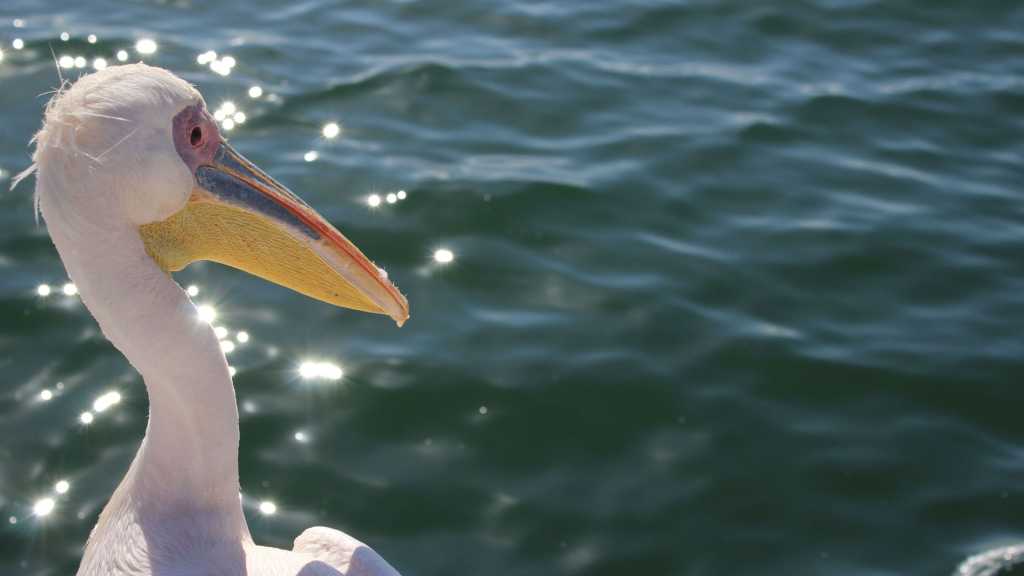Walvis Bay: Main fishing port at the edge of the desert , Walvis Bay is a paradise for birds: thousand of flamingos, pelicans, cormorans and fish-eating water birds color the smooth surface of it's lagoons, in any season. The Walvis Bay lagoon lends itself admirably to bird watching and this area is home to almost half of the regional population of flamingos. Excursions are possible by boat to observe dolphins and sea lions but you can also observe approaching the lagoon with your own vehicule.
Swakopmund: "The white city" sometimes swept by the sand, sometimes bathed in coastal fog, was first a harbor built in the desert before becoming the first seaside resort in Namibia. However, the temperature of the water doesn't exceed 15°C even in summer, the city is now the flagship destination for lovers of extreme sport. The thrilling activities though very expensive offer unique experiences such as climbing, descending or flying over huge dunes.
Cape Cross: This is where Diego Cao landed in 1486, the first European to tread on the Namibian ground. Cape Cross is also a sanctuary for some 80 to 110 000 sea lions that offer an extraordinary sight.
West of Namibia is entirely turned towards tourism and reserves for its visitor’s epics journeys by road, huge skies and captivating landscapes… It’s the Namibia of our dreams, the one that makes this country to be called the « jewel of Africa ».
A charming seaside resort and top adventure sports venue, Swakopmund is an excellent base for exploring the Skeleton Coast or discovering Walvis Bay and its wildlife…The Namib desert is the Namibian largest natural conservatory and contains a variety of landscapes: the giant Sossusvlei dunes to the majestic Naukluft mountains.
Advices:
- If you can afford, flying over in light aircraft from Swakopmund to Sossusvlei: going inland and flying over Sesriem and going back to the coast will leave you unforgettable pictures and photos...
- If you wish to climb the famous dune "Big Daddy" and enjoy the bird’s eye view of DeadVlei, it’s better to sleep on site or near the entrance of the site… the sun beats hard in the day, the heat is overwhelming, and the lights are never as beautiful as the morning at dawn or late afternoon when the sun goes down
The Great Namibia
Namibia, what else could we ask for? Almost permanent sunshine, great variety of landscapes with wild beauty, national parks rich in fauna and flora. In the West, the Namib desert, the oldest on the planet, the world highest dunes. In the South, the Fish River Canyon, the biggest after the Colorado. In the North, the largest national park in Africa: Etosha. A captivating country with extraordinary natural riches, Namibia deserves its nickname "Jewel of Africa".
When to go?
Subtropical and dry with warm days and cool nights. During the southern summer (from November to March), temperatures vary from 16 to 34°C and in desert areas they can reach 40 to 45°C. In winter (from June to August), they range from 4 to 22℃ and sometimes fall below 0℃ on the relief or in the desert.
The best season to go to Namibia is during the first weeks of November and April. Its not the peak season and the conditions of visit are good. If the high season (May to October) wins the prize of the best climate. Its not necessarily the best because tourists are the most numerous. The rainy season should be avoided if there are plans to explore national parks.
Formalities
The passport must include two blank pages and still be valid for 6 months after the expected date of exit from Namibia. The visa is not compulsory for French nationals. Holders of a French passport are granted tourist visa permits for a maximum of 90 days, which are issued free of charge upon arrival, in particular for immigration checks at Windhoek airport.
For any minor child: a multilingual extract of birth certificate (or an unabridged birth certificate translated into English - certified translation) is required to enter and leave Namibia (in the case of a child traveling with his 2 parents). Please consult the official sites for more information about all the requested documents according to your case.
Health
No vaccination is required for entry into Namibia.
Anti-malarial treatment is recommended (see your doctor). However, it is advisable to check the updating of your usual reminders and vaccinations as for any trip.
Currency
The currency in Namibia is the Namibian dollar (NAD).
Bank cards and traveller’s checks are widely accepted in Namibia, except for the purchase of gasoline especially inside the parks. Major credit cards are accepted in most shops, restaurants and hotels.
Banks and foreign exchange offices make the exchange of your currencies
For your payments, do not hesitate to use the South African rand.
